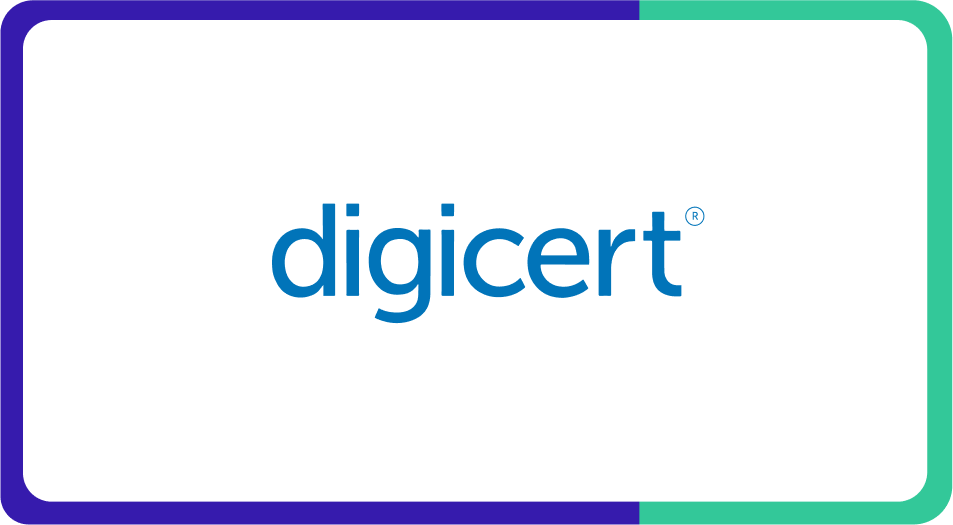
2024-2-17 00:33:7 Author: securityboulevard.com(查看原文) 阅读量:10 收藏
As the leader of a sales organization, it’s your job to set your team up for success. Great sales leaders do everything possible to put their teams in a favorable position. They constantly ask themselves: How well is my team positioned to win in our target market? What can I do to stack the odds in their favor?
When it comes to factors that influence the outcome of a deal, sales leaders generally think about the following elements: Quality of product or service, price, perceived value, perceived culture fit, the skills of the salesperson, and levers available to sweeten the deal (e.g., discounts).
What may be less obvious is that IT compliance — the process of meeting a third party’s requirements for digital security — has become a top influencer of sales success in the past few years.
Now that organizations increasingly rely on third-party technologies and service providers to run their business, decision-makers have become highly aware of the risks of outsourcing. Before onboarding new technology and service providers, decision-makers are keen to know how a prospective vendor will handle their information and what security safeguards and data management processes the vendor has set up to ensure information availability, integrity, and confidentiality.
At this time, seasoned buyers of technology and business services will not be satisfied if you simply claim that you can safeguard their sensitive information. To win, you must be able to continually demonstrate that your security controls are functioning properly and delivering an adequate level of protection.
Multiple IT compliance standards (e.g., SOC 2, ISO 27001, PCI DSS, FedRamp, CMMC, etc.) have emerged to facilitate business operations over time. The exact security standards and regulations you’ll need to adhere to depends on the requirements of your target customer base. But regardless of who you are, as long as your company handles sensitive customer information, you’ll need to implement robust practices to protect your critical assets and meet one or more IT compliance standards to prove your trustworthiness to customers.
If you fail to do this, it puts your company at a competitive disadvantage and hurts your sales team’s performance.
How IT compliance can impact your pipeline
If you’re selling technology to a Fortune 500 company that wants to see your latest SOC 2 Type 2 report but you don’t have one, you could lose anywhere between $100K to $1M on the deal, depending on the product you’re selling.
As your security and compliance team is getting ready for the SOC 2 assessment, the deal can be jeopardized by any of the following issues:
- Your competitors may swoop in
- The buying committee may decide to pursue other initiatives and deprioritize the initiative that included your solution
- The champion of the buying committee can leave the organization and their successor may not be nearly as enthusiastic about the project the former champion was pursuing.
To protect the deal, it would be wise to do whatever it takes to get that SOC 2 report as quickly as possible.
IT compliance impacts your long-term success

IT compliance regulation impacts not only results this quarter but also your long-term success. It is critical to understand the regulatory environment in markets you are considering entering before you choose to step into these new markets. You should assess the compliance regulation requirements of that market and determine how well positioned you are to meet those requirements during the early phases of forming your go-to-market strategy.
If you rush into a new market, without having done the homework first to understand what it takes and how much it costs to operate in a new region from a regulatory standpoint, your sales team may lose an entire year or longer — because they can’t legally transact with customers in that region.
Streamlining the path to IT compliance: Choosing efficiency over complexity

If a prospect comes to you and asks to see your latest SOC 2 Type 2 report but your organization doesn’t have it yet, do you know how long it will take for your security or compliance team to achieve the certification?
The time needed to gain a SOC 2 certification (or any other certification like ISO 27001) will vary based on four key variables:
- The maturity of your existing security program. If you’ve got robust security policies, procedures and technical safeguards (e.g., firewalls, content filters) in place already, you won’t need to develop many new policies or procedures (or purchase new technologies) to meet IT compliance requirements.
- The skillsets of personnel responsible for compliance. If you’ve got access to seasoned compliance professionals, you can get this project done much sooner than if your organization had to hire talent for this project from scratch.
- The amount of time these personnel have to devote to compliance work each day.
- The tools used. If your compliance team uses spreadsheets and other ad-hoc tools like Outlook, G-Drive, or Dropbox to do compliance work, the process will be quite slow and painful. Why? Because compliance work requires meticulous documentation, information gathering, and a lot of collaboration between people in multiple business units. Spreadsheets simply aren’t built for the requirements of modern compliance work.
However, using a purpose-built, well-designed compliance operations platform, a compliance team can work in 50 to 70 percent less time, holding all other factors constant.
See how DigiCert used Hyperproof to manage multiple IT compliance frameworks much more efficiently

How you can drive a better outcome

As a sales leader, you can take steps to help your compliance team achieve necessary IT compliance standards in a shorter amount of time.
You can start by talking to your company’s security and compliance leaders about how much their work impacts top-line revenue. Ask them whether they’re experiencing any challenges with their tools or other issues that keep them from being fully productive.
For instance, if they’re using ad hoc tools like spreadsheets to do their work, let them know that there is purpose-built compliance software such as Hyperproof to help them get work done faster. Tools like Hyperproof have quite a low cost and typically become ROI positive within just a few months of usage when you consider the number of deals and dollars that may be on the line due to unresolved compliance issues.
See how Hyperproof used its own software to cut the time to achieve SOC 2 Type 2 by 70 percent
![]()
Since security and compliance teams are often perceived as cost centers within an organization, they tend to have relatively small budgets. They may not have the budget today to buy new compliance software. But your team may have extra wriggle room in its budget. If that’s the case, you can come in to subsidize the cost of new compliance software, knowing that you will likely see big returns on that investment in the form of new business.
If your compliance team needs more compliance subject matter expertise to succeed, let them know that many affordable options are available. For instance, Hyperproof has relationships with professional services firms across the U.S. with cybersecurity, data privacy, and compliance expertise. These firms offer various compliance services at different price points.
Visit the Compliance Services Directory
Navigating IT Compliance Challenges
Understanding IT Compliance and Its Importance
Understanding IT compliance is crucial for safeguarding data and ensuring your business adheres to legal and industry-specific regulations. It’s essentially about keeping digital operations within the bounds of relevant laws and standards.
By staying IT compliant, your business prevents severe legal action and financial losses that can arise from non-compliance incidents. Moreover, it nurtures customer trust because clients know their sensitive information is handled securely. Non-compliance doesn’t just lead to fines but can damage your reputation and customer relationships, which might take years to repair.
IT compliance involves managing risks by aligning IT processes with the regulatory
requirements pertinent to your industry. As customer data protection becomes increasingly paramount, compliance also secures your competitive edge by demonstrating your commitment to data security.
Incorporating compliance into your business framework isn’t optional; it’s a requisite for reliably managing risks and maintaining critical data’s integrity, availability, and confidentiality.
The Goals and Challenges in Achieving IT Compliance
IT compliance aims to protect sensitive information and assure customers and stakeholders that data is safe. However, achieving and maintaining compliance can be complex, primarily due to the evolving nature of technology and regulations.
Challenges in reaching IT compliance include:
- Staying updated with the ever-changing compliance standards and legal mandates.
- Aligning security policies with compliance requirements while managing costs.
- Ensuring staff training, company procedures, and IT systems meet compliance needs.
- Addressing the compliance of cloud services and other third-party vendors.
- Balancing the need for operational functionality while remaining secure and compliant.
Effective IT compliance demands continual monitoring, regular audits, and quick adaptations to regulatory changes, intending to minimize risk and protect against potential security breaches.
Establishing a Robust IT Compliance Program
Common IT Compliance Standards and Regulations:
Certain IT compliance standards and regulations have become the norm for any company managing data, particularly within the tech sector. Here’s a brief rundown of key regulations:
- Health Insurance Portability and Accountability Act (HIPAA)
- Protects sensitive patient data
- Applies to the healthcare industry and related services
- Payment Card Industry Data Security Standard (PCI-DSS)
- Secures credit and debit card transactions to prevent fraud
- Mandatory for businesses handling cardholder data
- General Data Protection Regulation (GDPR)
- Governs data protection and privacy in the EU and EEA
- Applies globally to organizations dealing with personal data of EU residents
- Sarbanes-Oxley Act (SOX)
- Imposes strict auditing and financial regulations on public companies
- Mandates the integrity of financial records
- Federal Information Security Management Act (FISMA)
- Ensures the security of federal data and IT systems
- Applicable to all US federal agencies
- Provides specifications for an information security management system (ISMS)
- Is widely respected and recognized globally
These regulations are just a starting point, and it’s essential to evaluate which ones apply to your specific business operations. They often share common threads, such as the need to protect data privacy, ensure security, and maintain data integrity. However, compliance will vary depending on industry, data type, and geographic location. Create a quality and consistent compliance program.
How does Hyperproof’s IT compliance operations platform work?
Hyperproof’s compliance operations software provides compliance teams a central, secure place to get all of their IT compliance work done. It comes with a set of innovative features designed to automate processes and eliminate inefficiencies.
Here are some unique features of Hyperproof designed to give you time back, streamline your IT compliance effort, and inform risk management decisions.
Starter templates
Hyperproof has developed starter templates for dozens of cybersecurity and data privacy compliance standards, including NIST SP 800-53, ISO 27001, PCI DSS, HIPAA, SOC 2, SOX, CSA’s Cloud Controls Matrix, CMMC, and many others. Each template comes with all the framework requirements, organized by domains. Many of our frameworks also come with illustrative controls as a starting point for creating your custom controls. We invest ongoing resources to support emerging data security and privacy standards and regulations.
CrossWalks
Hyperproof has completed the mapping between requirements within various cybersecurity frameworks to help you jumpstart your efforts to adhere to multiple compliance programs. The mapping follows the Secure Controls Framework (SCF), a framework developed by Compliance Forge. SCF is a comprehensive catalog of controls that enables companies to design, build and maintain security processes, systems and applications.
By using the crosswalks provided by SCF, organizations can assess and implement additional compliance frameworks more rapidly, using existing controls.
As changes are made to the details of controls or as new frameworks are added, a compliance team will have the option to select which controls should be linked to the new requirements from suggestions based on provided crosswalks.
This allows compliance teams to design and manage a smaller set of controls to meet multiple compliance standards more efficiently.
Labels to collect evidence once and reuse multiple times
Collecting compliance documentation and fulfilling audit requests can be a major time sink if a team has to complete several audits each year but tackles each audit independently. Labels (a Hyperproof concept) are containers for storing specific types of evidence, allowing you to collect evidence once and reuse it across multiple controls or frameworks. Link a label to as many controls as you like, and any evidence attached to the label will be reflected across all the controls.
Integrations
Hyperproof has native integration with the tools you already use and love. With our native integrations, you can automate the collection of evidence files and reduce the friction in collaborative processes. You can also use the Hyperproof API to detect compliance events, extract evidence from source systems (e.g. Jira, GitHub, Workday, Checkr, etc.), and auto-import evidence into Hyperproof.
Automated reminders to review controls and evidence
Hyperproof supports continuous compliance. With automated reminders, you can ensure that testing and evidence collection is happening throughout the year, rather than right before an audit.
Dashboard and drill-down reports
Hyperproof provides reports to give teams a thorough understanding of the status of each compliance program and a high-level view of their overall compliance posture. With real-time data on where they stand, teams can hone in on what remediations are needed, which controls need to be reviewed, and exactly where they need to focus their energy.

The post Achieving IT Compliance Standards: An Essential Ingredient For Securing Successful Deals appeared first on Hyperproof.
*** This is a Security Bloggers Network syndicated blog from Hyperproof authored by Hyperproof Team. Read the original post at: https://hyperproof.io/resource/it-compliance-essential-ingredient-winning-deals/
如有侵权请联系:admin#unsafe.sh